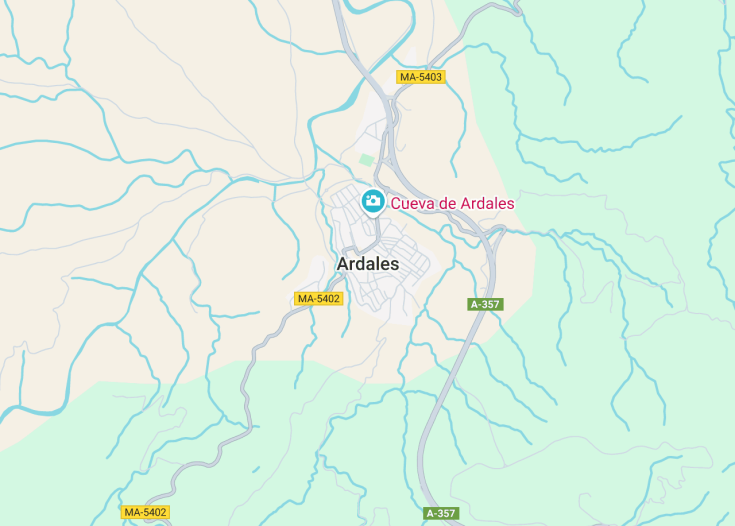Ardales is a quaint village nestled in the heart of Spain’s Andalusia region, offering a unique blend of natural beauty, ancient history, and traditional Spanish culture. This hidden gem in the province of Málaga is renowned for its breathtaking landscapes, including the famous El Chorro Gorge. The village is a treasure trove of cultural heritage, with the prehistoric cave paintings in the nearby Cueva de Ardales and the imposing ruins of the Ardales Castle. Visitors to Ardales can enjoy a peaceful retreat while exploring the rich tapestry of its past.
Ensure to visit during the Festival of El Saucejo, when Ardales comes to life with festive fervor and traditional Spanish music and dance.
Pack comfortable footwear as exploring the village’s hilly landscape and nearby nature trails requires substantial walking.
Top things to do & see in Ardales
Select the following sights and activities to discover best tickets and tours available in Ardales.
Discover Ardales: Gateway to Natural Beauty and History
| Country | Spain |
| Time in Ardales | GMT+1 |
| Language spoken | Spanish |
| Population | 2,802 (2021 census, Instituto Nacional de Estadística) |
| Currency | Euro (€, EUR) |
| Airports |
|
Ardales is a quaint municipality in the province of Málaga, embodying the rustic charm of Spain’s Andalusia region. Nestled between rugged mountains and lush valleys, this town is more than just a scenic spot; it’s a portal to the past. With its rich history dating back to the Neolithic era as evidenced by the cave paintings in Cueva de Doña Trinidad Grund, Ardales offers a unique glimpse into early human civilizations. The Roman fort ruins and Moorish castles tell tales of its strategic importance through various epochs.
The town’s proximity to the Ardales Natural Park is particularly significant for nature lovers and outdoor enthusiasts. Renowned for its dramatic landscapes, including the turquoise waters of the Embalses del Guadalhorce and the Gaitanes Gorge, the park is a hub for hiking, kayaking, and rock climbing. Moreover, Ardales is famous for the Caminito del Rey, an awe-inspiring cliffside walkway pinned along the steep walls of a narrow gorge in El Chorro.
Ardales also captivates those with an interest in traditional Spanish culture. With its whitewashed houses, local culinary offerings such as porra antequerana and mollete, and vibrant annual fiestas like the Festival of Andalusian folklore, visitors can experience a deep sense of the Andalusian way of life. The town’s small scale contributes to its appeal, offering an intimate setting for exploring the heartfelt community spirit of southern Spain.
Where is Ardales?
Located in the heart of the Andalusian countryside of Spain, approximately 45 miles north of Málaga city.
Distances:
| Route | Distance by Car | Time by Car |
|---|---|---|
| Málaga to Ardales | 43 mi | 50 min |
| Seville to Ardales | 129 mi | 2 hrs 10 min |
What is Ardales famous for?
Ardales is famous for the Caminito del Rey, a thrilling walkway that traverses along precipitous cliffs and offers stunning views of the surrounding natural scenery. It’s also rich in historical and cultural heritage, with numerous archaeological sites throughout the region.
History
Ardales, a picturesque village in Andalusia, Spain, boasts a rich historical tapestry that dates back to prehistoric times. This section delineates the journey of Ardales from its earliest inception to its current status.
Prehistoric Times – Ancient Era
The region of Ardales has been inhabited since prehistoric times, with the caves around the village serving as prime archaeological sites. The caves, notably the Cueva de Ardales, contain Paleolithic cave paintings estimated to be up to 20,000 years old, suggesting early human occupation. These early inhabitants were primarily hunters and gatherers, making use of the abundant natural resources in the area.
Roman Occupation (3rd Century BC – 5th Century AD)
With the advent of the Romans, Ardales saw significant changes. The Romans utilized its strategic location for military purposes and established a settlement. They introduced advanced agricultural techniques, olive cultivation, and road networks, integrating Ardales into the broader Roman Empire. The remnants of this era can still be seen in the architectural ruins scattered around the village.
Islamic Rule (8th Century – 15th Century)
The Moors took over in the 8th century, ushering in a period of architectural and cultural flourishment in Ardales. The village underwent a transformation under Islamic rule, complete with the construction of fortresses and the introduction of intricate irrigation systems. The Moorish influence remains a significant part of Ardales’ cultural heritage, observable in the local cuisine, art, and architecture.
Christian Reconquest – Modern Era (15th Century – 20th Century)
Ardales was reconquered by the Christian forces in the 15th century. This period marked another phase of rebuilding and cultural integration. The 20th century was noteworthy for economic diversification, with a focus on agriculture, tourism, and local crafts, which remain prominent to this day.
Visit Ardales
What to see and do in Ardales
In Ardales, visitors can explore its rich history and natural beauty. Key attractions include:
- The Ardales Park, ideal for hiking and nature walks.
- The prehistoric Cueva de Ardales, famous for its ancient cave paintings.
- The ruins of the Moorish castle offering panoramic views of the countryside.
- Local museums showcasing Ardales’ history and culture.
Annual Events in Ardales
Ardales hosts several festivals and events annually, notably:
- The Feria de Agosto, celebrating local culture and traditions each summer.
- The Fiesta de la Candelaria, a candlelit procession in February that lights up the village.
Best time to visit Ardales
The optimal times to visit Ardales are spring and fall when the weather is mild and conducive to outdoor activities and exploration.
Is Ardales worth visiting?
Ardales is indeed worth visiting for those interested in a blend of natural beauty, historical depth, and cultural richness. The village offers a unique insight into the historical progression from prehistoric to modern times, enhanced by its natural landscapes and hospitable community.










